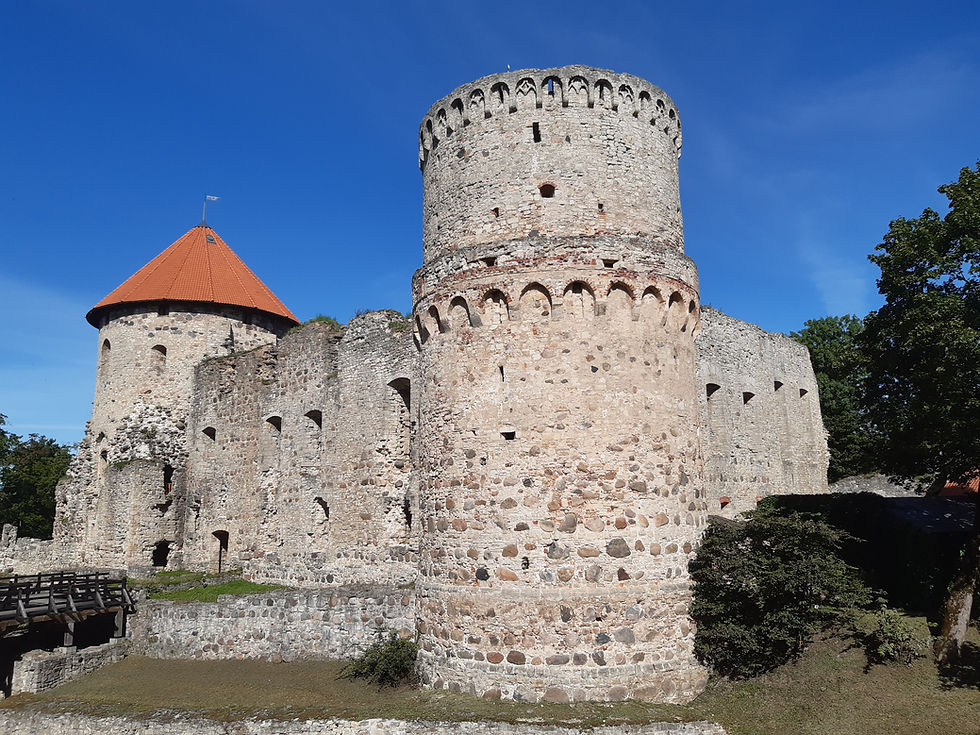Wenden: A Fortress at the Edge of Christendom (1206-1230)
- byrneside
- Aug 8
- 3 min read
Updated: Oct 10

In the early years of the 13th century, as the Crusader presence in Livonia began to tighten its grip, a new fortress rose amid the forests and rivers of the Gauja (Aa) Valley. This was Wenden – modern-day Cēsis – where the Livonian Brothers of the Sword began to fortify in stone the site of the Wendish hillfort at Nut Hill (Nussberg). The year was 1206, and the land was still fiercely contested - held not just by swords and siegeworks, but by fragile alliances with the newly converted Livs and Letts, pagan resistance, and the harsh demands of faith and conquest.
Wenden was not yet the imposing stone ruin known today. At this point, the castle was still emerging from the ground – rudimentary stone walls enclosing a wooden core, built as much for symbolic dominance as for immediate defence. The Swordbrothers, newly established and still proving their worth to the mission stated by Bishop Albert of Riga and the Holy Roman Empire, made Wenden one of their earliest and most important strongholds in Livonia. It stood close to the front lines of conquest, ideally placed to guard the route inland from Riga and to act as a staging point for campaigns deeper into the pagan lands of Estonia.
For the men who lived there – knights, sergeants, lay brothers, and squires, Wenden would have felt both remote and vital. The fortress was a cold, disciplined place, built to reflect the ideals of monastic knighthood. It was likely austere, functional, and heavily fortified for the time, with thick timber defences supplemented by early stone structures. Its chapel would have been among the first completed buildings – simple, Romanesque, and echoing with prayers spoken in Latin amidst the howling northern winds.
From within these walls, the Brothers launched raids and missions to secure nearby territory, punish rebellious tribes, and convert, or destroy, those who resisted baptism. The castle’s garrison lived under the strict rule of the Order, waking to prayers before dawn, training for battle daily, and enforcing the rigid discipline that came with their dual vocation: warrior and monk. There was little comfort. Food was plain, supplies were irregular, and the fear of ambush was constant. The surrounding forests were not yet pacified. Even the act of collecting firewood could become a deadly chore.
But Wenden was more than just a military base. It was a symbol. To the native Livs and Letts, it marked the beginning of a new and violent order – a foreign world of stone walls, iron crosses, and foreign tongues. To the Swordbrothers, it was a foothold in the wilderness, a place where Latin Christendom could take root in a pagan world. And to the crusaders stationed there – it would have loomed as both sanctuary and prison: a place where fate and faith were forged in equal measure.
As the years passed, Wenden's fortifications grew stronger, its garrison more experienced, and its role more central to the conquest of Livonia. But in the years between 1206 and 1230, it remained a frontier bastion – unfinished, unpredictable, and filled with the tension of a land caught between two worlds. It was here, amid cold stone and darker ambitions, that the Swordbrothers planned their expansion northwards and carried out the harsh work of Christendom’s advance – one brutal campaign at a time.




Comments